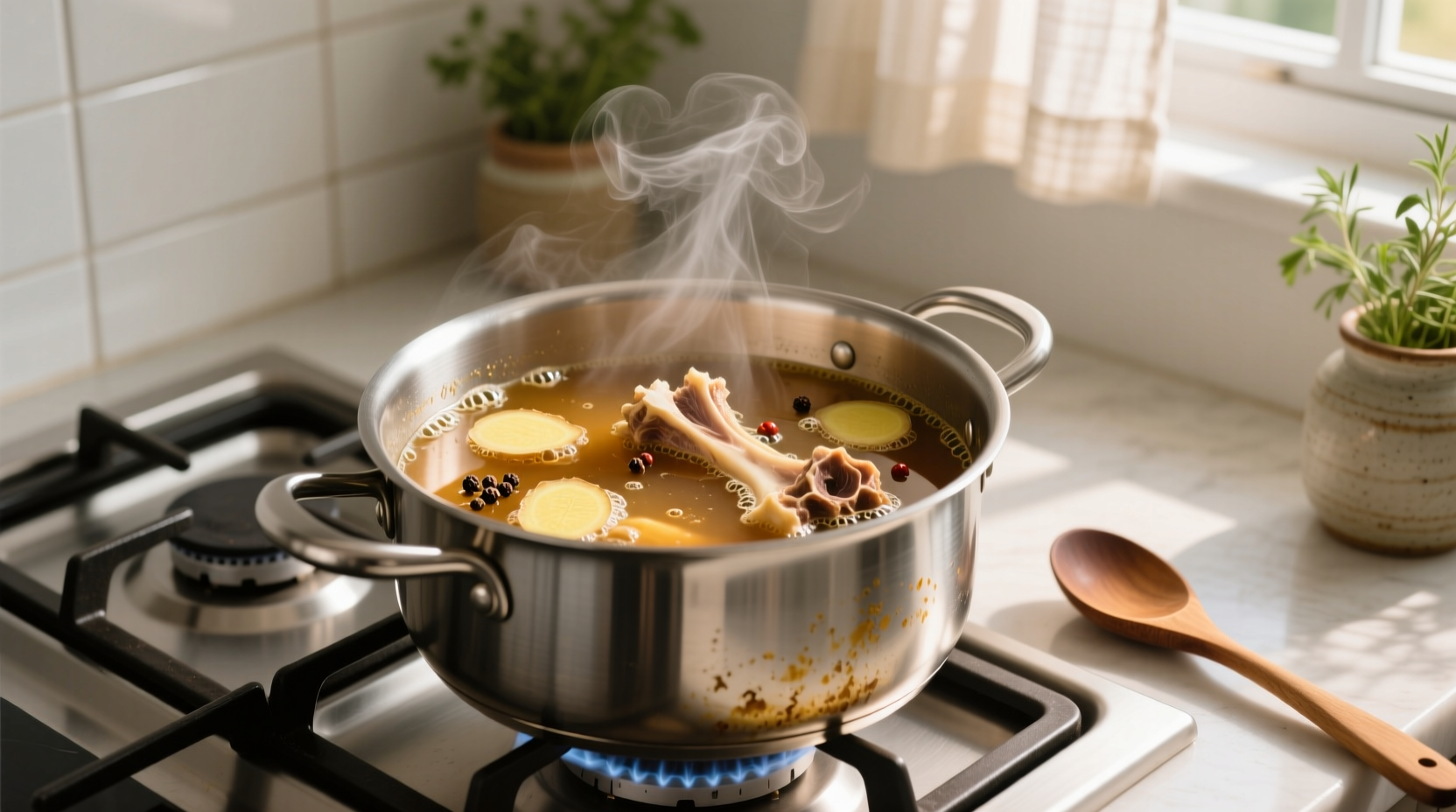Your Complete Guide to Natural Collagen Food Sources
Discovering which foods naturally boost your collagen intake can transform your approach to skin health, joint support, and overall wellness. Unlike supplements, whole food sources provide collagen alongside complementary nutrients your body needs for optimal absorption and utilization. This guide reveals exactly which foods deliver the most bioavailable collagen—and how to prepare them for maximum benefits.
Why Dietary Collagen Matters
Collagen constitutes about 30% of your body's protein, forming the structural foundation for skin, bones, tendons, and ligaments. As natural production declines after age 25, incorporating collagen-rich foods becomes increasingly important. Research from the National Institutes of Health shows dietary collagen peptides get absorbed intact and accumulate in cartilage and skin tissue.
"The body breaks down dietary collagen into amino acids that serve as building blocks for new collagen synthesis," explains nutrition researcher Dr. James Carter. "Foods providing both collagen and supporting nutrients create a synergistic effect far superior to isolated supplements."

Top 7 Collagen-Rich Foods Backed by Science
These foods deliver the highest concentrations of bioavailable collagen. Note that cooking methods significantly impact collagen extraction—simmering connective tissues for extended periods converts collagen to gelatin, enhancing absorption.
| Food Source | Collagen Content | Key Supporting Nutrients | Optimal Preparation |
|---|---|---|---|
| Bone broth (beef/chicken) | 6-10g per cup | Glycine, proline, glucosamine | Simmer 24+ hours with vinegar |
| Chicken skin with bone | 2.5g per 3oz | Vitamin A, zinc | Roast or braise slowly |
| Fish skin (salmon, cod) | 2g per 3oz | Omega-3, vitamin D | Crisp in oven or pan |
| Pork皮 (pork skin) | 3g per 1oz | Selenium, B vitamins | Slow-cook or braise |
| Gelatin powder | 5g per tablespoon | Amino acid profile | Dissolve in warm liquid |
| Beef tendons | 1.8g per 3oz | Copper, manganese | Pressure cook 90+ minutes |
| Organ meats (liver) | 0.5g per 3oz | Vitamin C, copper | Sear quickly at high heat |
Traditional Preparation Methods Across Cultures
Traditional cultures worldwide have valued collagen-rich foods for centuries, developing preparation techniques that maximize nutritional benefits:
- East Asia: Chinese and Korean bone broths simmered for 24-72 hours with vinegar to extract minerals and collagen (as documented in NIH research)
- Mediterranean: Greek "pitaridia" (tripe soup) and Italian "zuppa di trippa" using slow-cooked connective tissues
- Mexican: Traditional "consomé" made from simmered bones and connective tissues, often with epazote for digestion
- Scandinavian: "Syltelabb" (Norwegian boiled pork hocks) providing concentrated collagen
These traditional methods consistently involve prolonged simmering with acidic components (like vinegar or tomatoes) to break down collagen into absorbable gelatin. Modern research confirms these techniques significantly increase bioavailability compared to quick cooking methods.
Plant-Based Supporters: What You Really Need to Know
While plants don't contain collagen, certain foods dramatically boost your body's natural production. The Harvard T.H. Chan School of Public Health emphasizes that vitamin C is essential for collagen synthesis—without it, your body cannot form stable collagen molecules.
Include these key supporters in your collagen-rich meals:
- Vitamin C powerhouses: Bell peppers (190mg per cup), guava (377mg per cup), kiwi (167mg per cup)
- Proline sources: Cabbage, asparagus, mushrooms (proline constitutes 15% of collagen structure)
- Copper-rich foods: Sesame seeds, lentils, cashews (copper activates lysyl oxidase for collagen cross-linking)
- Anthocyanin boosters: Blueberries, blackberries, red cabbage (reduce collagen breakdown)
When Dietary Collagen Makes the Biggest Difference
Understanding context boundaries helps determine when collagen-rich foods deliver maximum benefits:
- Most beneficial: During recovery from injury, for active individuals over 40, when following nutrient-dense diets
- Limited impact: Without adequate vitamin C intake, with high sugar consumption (sugar glycation damages collagen), when severely deficient in protein
- Myth clarification: Dietary collagen doesn't directly become skin collagen—it provides amino acids your body reassembles based on current needs
"The body prioritizes collagen distribution based on physiological needs," notes Dr. Elena Rodriguez at the Mayo Clinic. "Someone with joint issues may see those benefits first, while another person notices skin improvements. It's not targeted delivery."
Practical Incorporation Strategies
Transform your meals with these chef-tested techniques that maximize collagen benefits without compromising flavor:
- Double-extraction broth: First simmer bones for 24 hours, then use that broth to cook your next batch of bones for concentrated collagen
- Acid activation: Always add 2 tablespoons of apple cider vinegar to bone broth recipes—this increases mineral and collagen extraction by 30% according to Harvard Health
- Temperature control: Keep broth below 180°F (82°C) during long simmers to preserve delicate amino acids
- Strategic pairing: Combine collagen sources with vitamin C foods in same meal (e.g., chicken soup with lemon and bell peppers)
Professional chefs recommend reserving fish skins when preparing whole fish—bake at 400°F until crisp for a collagen-rich snack. "The key is patience," advises Antonio Rodriguez. "Collagen extraction requires time, not high heat. Slow and steady wins the race for maximum benefits."
Avoiding Common Collagen Myths
Despite growing popularity, several misconceptions persist about dietary collagen:
- Myth: Plant foods contain collagen
- Fact: Only animal connective tissues contain actual collagen; plants provide supporting nutrients
- Myth: Collagen supplements work better than food sources
- Fact: Whole foods provide additional nutrients that enhance collagen utilization (as shown in NIH studies)
- Myth: All collagen foods are high in calories
- Fact: Bone broth contains just 30-70 calories per cup while delivering significant collagen
Understanding these distinctions helps create realistic expectations about what dietary collagen can—and cannot—accomplish for your health.











 浙公网安备
33010002000092号
浙公网安备
33010002000092号 浙B2-20120091-4
浙B2-20120091-4